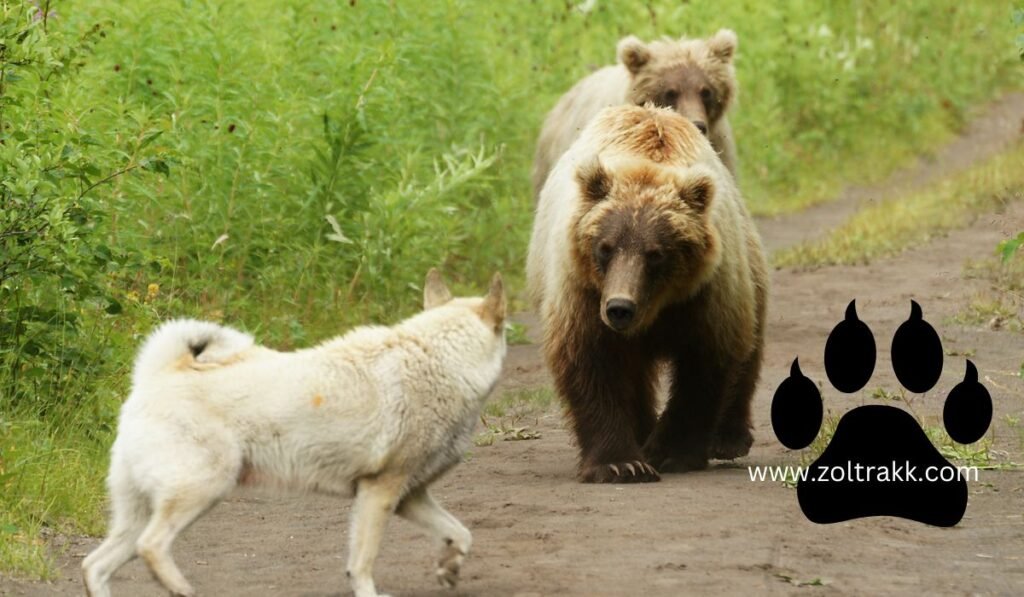Key Takeaways:
- Are bears related to dogs, Bears and dogs share a common evolutionary ancestor from about 55 million years ago but belong to different families.
- Both belong to the order Carnivora, yet their evolution diverged millions of years ago into separate families.
- Key differences include physical characteristics, dietary preferences, habitats, and behavior patterns.
- Despite similarities in some skeletal structures and behavior, bears and dogs have distinct evolutionary paths.
- Understanding their differences helps in wildlife conservation and addressing myths about their behavior.
Bears and puppies are regularly in comparison because of their comparable appearances, behaviours, and the truth that they’re all carnivorous mammals. However, even as they proportion not unusual ancestor and belong to the order Carnivora, they may no longer be directly associated. Bears belong to their own family, Ursidae, while dogs are individuals of the circle of relatives Canidae. Their evolutionary paths diverged approximately fifty-five million years ago, leading to beautiful differences in their physical characteristics, behaviours, and habitats. Knowledge of the relationship between bears and puppies requires a better examination of their evolutionary records, anatomy, and behaviour, which this text covers cowl in an element supported by data, information, and research findings.
Are Bears related to puppies? information Their Evolutionary history

Bears and dogs aren’t immediately associated; however, they share a common ancestor around fifty-five million years ago. This ancestor is thought to be a small, carnivorous mammal that gave rise to specific branches of the order Carnivora, such as the Canidae (dogs, wolves, foxes) and Ursidae (bears). This divergence means that while bears and puppies have a few similarities, they developed one after the other into distinct families with specific trends.
Evolutionary Divergence of Bears and Dogs
| Order | Family | Common Ancestor | Divergence Time | Examples |
|---|---|---|---|---|
| Carnivora | Ursidae | Miacids | 55 million years ago | Brown bear, Polar bear |
| Carnivora | Canidae | Miacids | 55 million years ago | Dogs, Wolves, Foxes |
Evolutionary differences
At the same time, as each bear and puppy are a part of the Carnivora order, their evolutionary paths diverged substantially. Bears developed to turn out to be big, frequently solitary animals with a more excellent omnivorous weight loss plan. At the same time, puppies, originating from wolves, have become cent animals with robust social behaviours. This divergence is pondered by their bodily developments, diets, and social structures.
Key differences between Bears and dogs
Information on the variations among bears and puppies entails analyzing their anatomy, diet, habitat, and behaviour. Even though they share a carnivorous lineage, these variations spotlight the awesome evolutionary paths they have taken.
Physical traits
Bears are plenty larger and heavier than most dog species. A person male brown undergo, forstance, can weigh up to 850 pounds, at the same time as a grownup male wolf, which is the closest wild relative to dogs, weighs approximately a hundred forty-five pounds. Bears additionally have non-retractable claws, not like many dog breeds, that can partly retract their claws. Their paw structure, dental styles, and body construct are also drastically distinctive.
Food regimen and Feeding behaviour
While bears and puppies are categorized as carnivorous mammals, bears are more omnivorous. As the American black undergoes, most endure species devour a weight loss program composed of about eighty per cent plant-based ingredients, with the remaining 15% comprising animal proteins and insects. Puppies, alternatively, are more often than not carnivorous but have tailored to a more numerous food plan because of domestication. According to an investigation using the College of California, domesticated dogs’ diets can range from 50% to 80% animal protein, supplemented with grains, greens, and results.
Habitat and Distribution
Bears are determined in various habitats, from the icy terrains of the Arctic (Polar bears) to dense forests and mountainous areas (Brown bears and Black bears). Puppies have adapted to stay nearly anywhere because of domestication, from dense city environments to rural settings and wild areas.
Similarities between Bears and puppies
Regardless of the significant variations, there are a few super similarities between bears and puppies due to their shared carnivorous lineage.
Skeletal structure
Both bears and dogs share similarities in their skeletal structures, mainly in their skull shapes and dental styles, whichdesigned to method meat. However, endure skulls are broader and more robust, designed to crush bones and plant life.
Behavioral traits
Bears and dogs percentage positive behavioural traits, including play conduct and social dynamics in cubs and dogs. Each exhibits complex communique through vocalizations, body language, and fragrance marking.
The function of Evolution within the Divergence of Bears and puppies
The Evolution of bears and puppies has been fashioned with their adaptation to distinct environments and survival wishes.
Version to environment
Bears have advanced to become apex predators of their habitats, capable of looking for big prey; however, more often than not, relying on a varied diet. Puppies evolved from wolves, becoming domesticated and adapting to stay alongside human beings. This edition changed eating regimen, conduct, and bodily characteristics.
Genetic Studies and Phylogeny
Genetic research on using mitochondrial DNA has shown bears and dogs break up from a not unusnot-unusualr. An examination with the aid of Nature Genetics shows that this divergence passed off approximately 55 million years ago. While each is carnivorous, their variations and Evolution reflect particular ecological niches.
Comparison of Bears and Dogs
| Characteristics | Bears (Ursidae) | Dogs (Canidae) |
|---|---|---|
| Size | 300 to 850 pounds (Brown Bear) | 70 to 145 pounds (Wolf) |
| Diet | Omnivorous (85% plants, 15% animal protein) | Primarily carnivorous with adapted omnivorous traits |
| Habitat | Forests, mountains, Arctic regions | Urban, rural, and wild regions |
| Social Structure | Mostly solitary | Pack-oriented (wild ancestors like wolves) |
| Claw Structure | Non-retractable | Partially retractable in some breeds |
Implications for Conservation and Knowledge Natural World Conduct

Understanding the evolutionary relationship between bears and dogs is essential for flora and fauna conservation and management.
Conservation Efforts for Bears
Bears face numerous threats, which include habitat loss, poaching, and weather alternate. Conservation strategies frequently require knowledge of their natural behaviour and weight loss plan, which is hugely one of a kind from domesticated dogs.
Impact on canine conduct and schooling
Are bears related to dogs,For puppies, information on their evolutionary background facilitates training, behaviour amendment, and nutritional planning. Unlike bears, puppies have advanced to stay and work with humans, making them extra adaptable to human environments.
Frequently Asked Questions (FAQs)
Are Bears and dogs without delay associated?
No, bears and puppies aren’t immediately associated. They percentage a common ancestor from approximately 55 million years ago but have advanced into separate households.
Can Bears and Dogs Breed?
No, bears and dogs can not breed. they may be too genetically distant, belonging to exceptional families in the order Carnivora.
Do Bears and puppies Have similar Diets?
while both are carnivorous, bears have a greater omnivorous food plan consisting primarily of plant material, while dogs have a weight loss program based on meat.
Why Do Bears and dogs look comparable?
Their similarities in look, including four legs and fur, result from convergent Evolution and their shared carnivorous ancestry.
How Do Bears speak compared to dogs?
Bears communicate specifically through frame language, fragrance marking, and vocalizations. Dogs have various vocal and frame language alerts because of domestication.
Are Bears Smarter Than Dogs?
Each bear and puppies are wise, but their intelligence is manifested differently. Bears are skilled in problem-fixing, whilst puppies excel in social intelligence and communique with people.
Conclusion
Are bears related to dogs, At the same time, as bears and dogs might also share a common evolutionary ancestor and some bodily and behavioural tendencies, they’re not directly related and belong to exclusive families within Carnivora. Their evolutionary paths have diverged appreciably over tens of millions of years, central to beautiful variations in length, food regimen, habitat, and behaviour. Understanding those differences now is not the most effective provides to clinical information about those fascinating creatures but additionally performs a crucial position in their conservation and management. Whether within the wild or in human companionship, bears and dogs continue to captivate our curiosity with their precise traits and evolutionary journeys.


